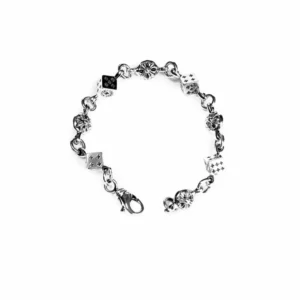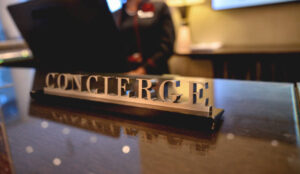
Understanding Popcorn Ceilings: History and Composition
Popcorn ceilings removal, also known as acoustic or stipple ceilings, were a dominant architectural feature in American homes from the 1950s through the 1980s. These textured ceilings gained popularity for several practical reasons:
- Sound dampening qualities that reduced noise transfer between rooms
- Cost-effective installation that hid imperfections in the ceiling drywall
- Quick application that saved builders time during construction
The distinctive bumpy texture is created by spraying a mixture that typically contains:
- Joint compound or drywall mud
- Styrofoam particles or vermiculite
- Sometimes asbestos (in pre-1980s applications)
- Occasionally paint additives for texture
Why Modern Homeowners Choose Removal
While functional in their time, popcorn ceilings now present several drawbacks that lead many homeowners to seek removal:
Aesthetic Considerations
- Dated appearance that makes homes look older
- Poor light reflection creating darker rooms
- Difficulty incorporating modern lighting like recessed cans
- Incompatibility with contemporary design trends favoring clean lines
Practical Concerns
- Dust accumulation in the textured surface
- Challenging to clean and prone to discoloration
- Potential damage from moisture or scraping
- Obstruction during repairs of ceiling fixtures
Health and Safety Factors
- Asbestos risk in homes built before 1980
- Lead paint concerns in older applications
- Mold growth potential in humid environments
- Respiratory irritants from deteriorating texture
Comprehensive Removal Methods Explained
Professional popcorn ceiling removal typically involves one of three primary approaches:
1. Dry Scraping Technique
- Best for: Well-adhered textures in good condition
- Process:
- Light scoring of the surface
- Careful scraping with specialized tools
- Minimal dust production
- Advantages:
- Least messy method
- Preserves ceiling integrity
- Fastest completion time
2. Wet Removal Method
- Best for: Thick or stubborn textures
- Process:
- Light misting with water (sometimes with vinegar)
- 15-20 minute soaking period
- Gentle scraping of softened material
- Advantages:
- Reduces dust significantly
- Easier on the drywall surface
- Effective for multiple layers
3. Encapsulation or Overlay
- Best for: Severely damaged ceilings or asbestos concerns
- Process:
- Applying a sealing primer
- Installing new drywall over existing ceiling
- Alternative: Using a skim coat product
- Advantages:
- Contains hazardous materials
- Creates perfectly smooth surface
- Solves structural issues simultaneously
Critical Safety Considerations
Asbestos Testing and Handling
For homes built before 1980, professional asbestos testing is strongly recommended. If positive:
- Required containment procedures
- Specialized PPE for workers
- HEPA filtration systems
- Proper disposal protocols
Dust Control Measures
Effective dust management involves:
- Plastic sheeting walls and floors
- Negative air pressure systems
- Air scrubbers with HEPA filters
- Misting systems during work
Electrical and Fixture Precautions
- Turning off ceiling-mounted fixtures
- Protecting light cans and vents
- Checking for hidden wiring
- Inspecting ceiling integrity
Post-Removal Finishing Options
After successful popcorn texture removal, homeowners can choose from several finishing approaches:
Smooth Ceiling Finish
- Multiple skim coats of joint compound
- Precision sanding between layers
- Requires skilled application
- Creates modern, gallery-like appearance
Light Texture Alternatives
- Orange peel spray texture
- Knockdown texture
- Skip trowel finish
- Provides some character while being cleanable
Specialty Finishes
- Venetian plaster
- Decorative faux finishes
- Tray ceiling designs
- Adds architectural interest
Cost Factors and Considerations
Several variables influence the total project cost:
Ceiling Conditions
- Height and accessibility
- Number of layers present
- Amount of prep work needed
- Presence of paint or sealants
Square Footage Pricing
- National average: $1-$2 per square foot
- High-cost areas: $2-$4 per square foot
- Additional charges for:
- High ceilings (over 9 feet)
- Complex room shapes
- Asbestos abatement
Regional Variations
- Labor costs in your area
- Local disposal fees
- Permit requirements
- Seasonal demand fluctuations
DIY vs Professional Removal: A Detailed Comparison
DIY Approach Considerations
- Potential cost savings on labor
- Time commitment (typically 3-5x longer than pros)
- Equipment needs:
- Special scrapers
- Sprayers for wet method
- Quality respirators
- Containment materials
- Skill requirements:
- Drywall repair knowledge
- Texture matching ability
- Proper safety protocols
Professional Advantages
- Proper asbestos handling (if present)
- Industrial-grade equipment
- Expert finishing techniques
- Dust containment systems
- Warranty on workmanship
- Proper disposal of materials
- Insurance coverage
Long-Term Maintenance After Removal
To preserve your newly smooth ceilings:
- Use quality primer before painting
- Address any water leaks immediately
- Dust regularly with microfiber tools
- Monitor for cracks as house settles
- Consider semi-gloss paint for easier cleaning
Frequently Asked Questions
Q: How can I tell if my popcorn ceiling contains asbestos?
A: The only reliable method is professional testing. Homes built before 1980 have higher likelihood, but even some 1980s applications may contain asbestos.
Q: Can popcorn ceilings be painted instead of removed?
A: While possible, painting often accentuates the texture and makes future removal more difficult. It also doesn’t address underlying issues.
Q: How long does the removal process typically take?
A: Most standard rooms (12×12) take professionals 6-8 hours from prep to final cleaning. Whole-house projects may take 3-5 days.
Q: Will removal affect my home’s resale value?
A: In most markets, removing popcorn ceilings increases appeal and may raise value, especially in homes built after asbestos was phased out.
Q: What’s the best season to have popcorn ceilings removed?
A: Moderate temperatures (spring/fall) are ideal as they allow for proper ventilation without extreme heat or cold affecting drying times.






